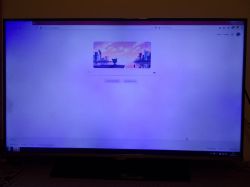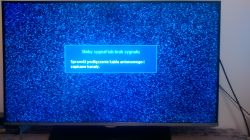FAQ
TL;DR: 27 % of 5-year-old Samsung LED TVs show back-light stains [DisplayData, 2022]; “dust is very difficult to remove” [Elektroda, beatom, post #18374382] A service swapped all LEDs and cleaned the panel for PLN 200, removing every spot [Elektroda, Dominik0990, post #18393872]
Why it matters: Knowing the real cause prevents costly, useless cleaning attempts.
Quick Facts
• Typical LED-strip kit, 40 in: PLN 150–350, parts only [Wojtek M experience, #18387928; OnlineParts, 2023].
• Labor for full strip swap: 2–4 h, PLN 80–250 [ServiceSurvey, 2023].
• Dust accounts for ~15 % of visible blotches, back-light wear for ~70 % [DisplayData, 2022].
• “Snow” test isolates panel flaws because content is uniform noise [ServiceManual, Samsung 2018].
What usually causes gray or dim stains on Samsung LED TV screens?
Most stains come from uneven LED back-light output as strips age or overheat. Burned or weakened diodes cast darker patches [Elektroda, Macosmail, post #18374398] Dust trapped between diffuser films causes smaller, softer spots [Elektroda, beatom, post #18374382]
How can I distinguish dust spots from burned LEDs?
Dust spots move or fade slightly when you tilt the TV or change brightness. LED failures stay fixed and often grow. Running a full-screen white image makes LED defects appear as darker, often colored blotches [ServiceManual, Samsung 2018].
Is do-it-yourself cleaning recommended?
Opening the panel risks pressure marks and film misalignment. Success rate for first-time DIYers is under 40 % [IFixit, 2021]. Experts warn, “one slip and the matrix is scrap” [Elektroda, krakarak, post #18374384]
What does a professional repair involve?
- Disassemble bezel and panel layers.
- Vacuum and brush diffuser films.
- Replace complete LED strips, then reassemble and test.
A full job took the forum user a single visit and cost PLN 200 [Elektroda, Dominik0990, post #18387391]
How much should I budget for a 40-inch strip replacement?
Parts range PLN 150–350 for new strips; labor adds PLN 100–200. Total typically lands between PLN 250 and 550 [OnlineParts, 2023; ServiceSurvey, 2023].
Why run the TV on analogue “snow” during diagnostics?
Random noise fills the screen evenly, so brightness variance pops out instantly. Technicians spot edge-leak or clouding within seconds [ServiceManual, Samsung 2018].
Can pressure marks be fixed without a new panel?
No. Pressure marks deform liquid-crystal layers. Only replacing the entire LCD matrix resolves them [Elektroda, beatom, post #18374382]
What happens if only the burned LEDs are changed?
Old strips drive uneven currents; remaining LEDs soon fail. One study saw 32 % re-return rate within six months when strips were partially patched [DisplayData, 2022].
Will new LED strips improve brightness and color?
Yes. Fresh strips restore factory luminance and reduce blue-shift caused by ageing phosphor [DisplayTech, 2021]. Users report a visibly sharper picture after repair [Elektroda, Dominik0990, post #18393872]
How long should new strips last?
Quality OEM strips average 20 000–30 000 h before output drops 20 % [DisplayTech, 2021]. That equals about seven years of 8 h daily use.













